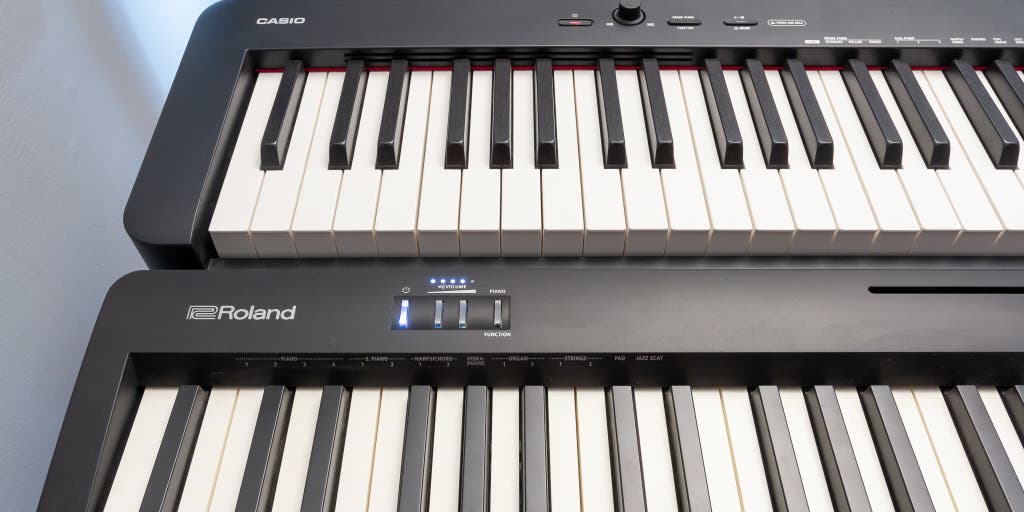1. Introduction
The Yamaha Digital Piano P 125 is a great choice for those who want to learn how to play the piano. It has been designed with features that make it easy to use and enjoyable for beginners and experienced players alike. The digital piano has a range of sounds, from classical to jazz, and can be used for both live performances and practice sessions. This article will provide an overview of the Yamaha Digital Piano P 125, its features, benefits, tips for playing it, and maintenance advice.
2. Overview of the Yamaha Digital Piano P 125
The Yamaha Digital Piano P 125 is a full-sized digital piano that offers 88-key graded hammer action keys with an adjustable touch response. It also comes with built-in speakers so you can enjoy your music without having to connect external speakers or headphones. The piano has 10 different voices including grand piano, electric piano, organ, strings, vibraphone, harpsichord and more. You can also layer two voices together or split them between the left and right hands for added versatility in sound. The P125 also includes a metronome to help keep you on track when practicing or performing and comes with 500 preset songs so you can start playing right away without having to buy additional sheet music or songbooks.
3. Features of the Yamaha Digital Piano P 125
The Yamaha Digital Piano P 125 comes packed with features that make it easy to use and enjoyable for both beginner and experienced players alike:
• 88-key Graded Hammer Action Keys – These keys respond differently depending on how hard they are pressed providing a realistic feel similar to an acoustic piano
• Adjustable Touch Response – You can customize the touch response of the keys for different styles of music
• Built-in Speakers – Enjoy your music without having to connect external speakers or headphones
• 10 Different Voices – Choose from grand piano, electric piano, organ, strings, vibraphone, harpsichord and more
• Layer Two Voices Together – Create unique sounds by layering two voices together or splitting them between left and right hands
• Metronome – Keeps you on track when practicing or performing
• 500 Preset Songs – Start playing right away without having to buy additional sheet music or songbooks
4. Benefits of Owning a Yamaha Digital Piano P 125
The Yamaha Digital Piano P 125 is ideal for those just starting out as well as experienced pianists who want portability without sacrificing sound quality. Its range of features makes it easy to use while providing excellent sound quality that rivals many acoustic pianos at a fraction of the price. The built-in speakers allow you to enjoy your music without needing any additional equipment while its 500 preset songs make it easy to start playing right away even if you don’t have access to sheet music or songbooks yet. Additionally its adjustable touch response allows you customize the keys depending on what style of music you’re playing making it suitable for any genre from classical to jazz.
5 How To Play The Yamaha Digital Piano P 125
Playing the Yamaha Digital Piano P125 is easy thanks its intuitive design which allows anyone from beginner level pianists up through advanced players get started quickly with minimal effort required in setup time.To get started simply plug in the power cord,turn on the power switch,select one of the ten available voices,begin playing one of the 500 preset songs,adjust settings such as touch sensitivity,layer multiple sounds together,split sounds between left & right hands,use metronome feature & more.Once comfortable enough progress onto learning more difficult pieces by referring back & forth between sheet music & playing along.
6 Tips For Getting The Most Out Of Your Yamaha Digital Piano P125
Getting the most out of your Yamaha digital piano requires some basic knowledge before diving into playing complex pieces.Here are some tips :
• Practice regularly – Make sure you set aside time each day/week dedicated solely towards practicing your instrument & developing technique.
• Listen – Listen carefully when practicing & take note how certain notes/chords sound compared others.This will help build up an understanding & appreciation towards each note’s purpose within context.
• Experiment – Don’t be afraid try out new things!Layer multiple sounds together,split left/right hand parts,adjust settings such as velocity sensitivity etc.This will help develop creativity & create unique sounds.
• Record – Use recording software like Garageband (or similar) record yourself practice/play pieces along with backing tracks etc.This will help identify areas needing improvement & allow focus specific sections during practice sessions.
7 Maintenance And Care For Your Yamaha Digital Piano P125
To ensure optimal performance over time proper maintenance is necessary for any instrument including digital pianos such as Yamaha’s p125 model.Here are some basic steps recommended :
• Dust regularly – Use soft cloths dampened slightly water remove dust particles from surface /keys/controls etc.. Avoid using harsh chemicals/solvents which may damage finish/internal components!
• Clean keys – Use soft cloth dampened slightly water wipe down each key remove dirt particles build up over time.. Avoid using harsh chemicals/solvents which may damage finish!
• Check connections – Make sure all cables connected securely into appropriate ports.. Ensure no signs corrosion around contacts etc.. If unsure please consult qualified technicians!
8 Conclusion
In conclusion,owning a yamaha digital piano p125 provides both beginner & experienced players alike great way learn /play instrument home at fraction cost traditional acoustic models!With range features such as 88-key graded hammer action keys adjustable touch response built-in speakers 10 different voices layer 2x voices together metronome 500 preset songs this digital keyboard perfect choice those wanting take their skills next level!
9 Resources
https://usa.yamaha.com/products/musical_instruments/pianos/digitalpianos_controllers/p_series/index.html

